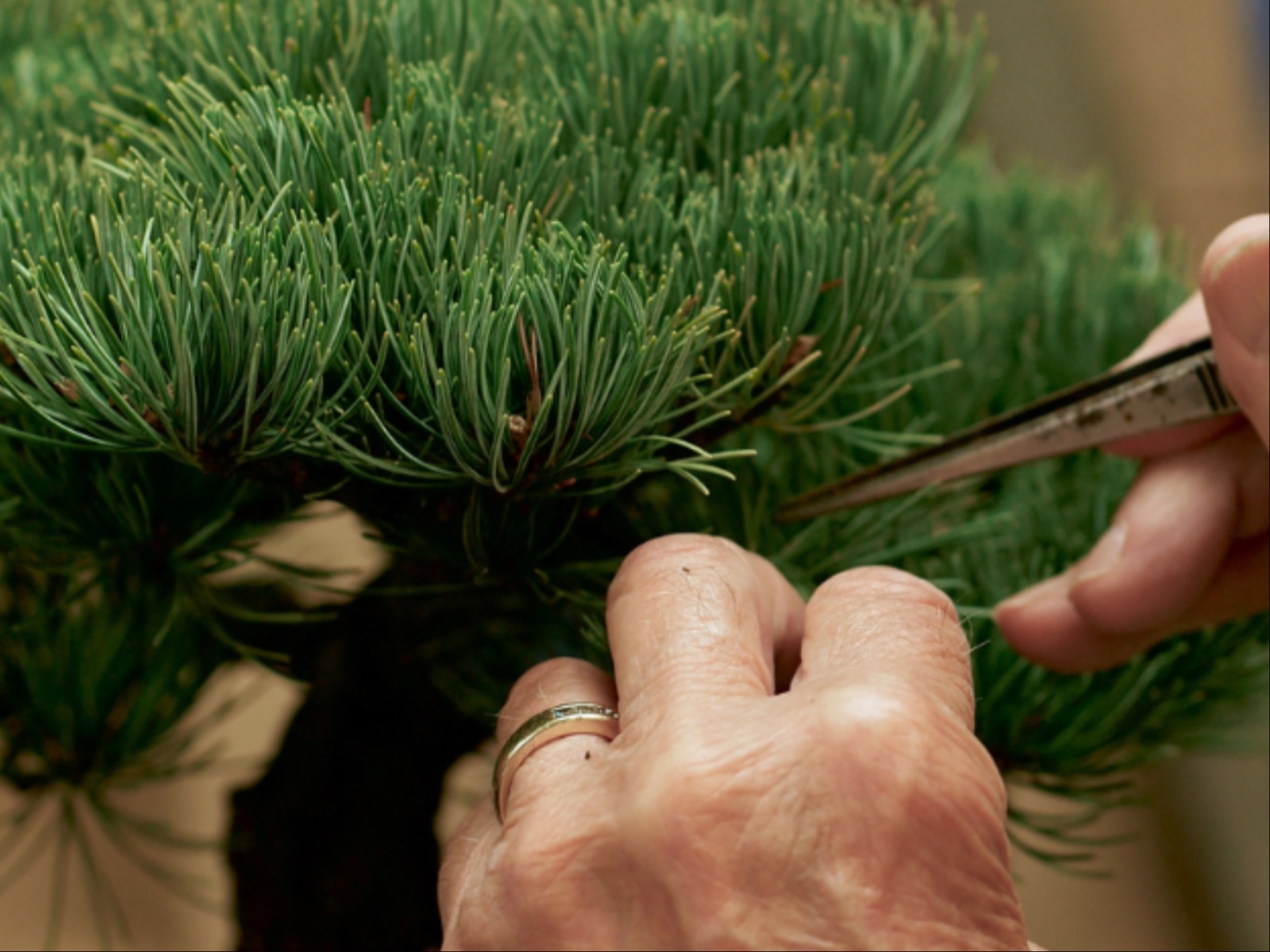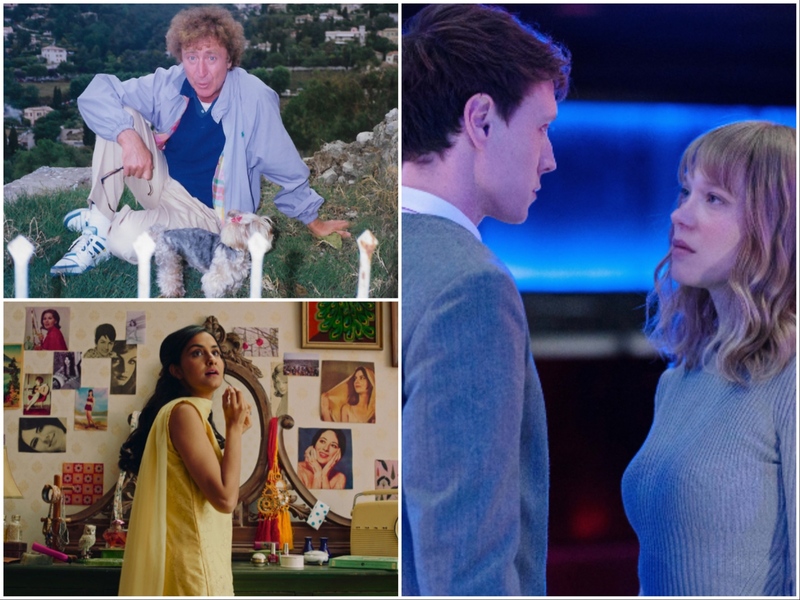Sorry, “It’s as interesting as watching grass grow”: You’re going to have to be retired as a simile. As it turns out, gazing upon plants growing, getting pruned and seemingly just sitting around can be actually quite mesmerizing and thought-provoking – at least that’s the case with the Milwaukee Film Festival selection “Light Needs,” an ideal viewing choice for either botanists or big-screen enthusiasts feeling the Earth Day spirit this week.
Selected as a part of the local Cream City Cinema program and sprouted from the brain of Milwaukee-based filmmaker Jesse McLean, the meditative documentary digs into big questions about houseplants. No, not questions like “Was I supposed to water that?” or “Does this look dead to you?” – but real philosophical and existential questions, such as: Why do we bring these outdoor dwellers inside? Why do so many people care about them like pets? And on the flip side, considering they’re living things, why DON’T many people think about them like pets? Blending interviews with green thumbs with hypnotic footage of foliage, McLean and “Light Needs” hopes these ideas take root in viewers’ brains and make people think a little harder about the silent roommate sitting on their windowsill.
The documentary made its debut on Sunday, but it’ll bloom on the big screen twice more during the Milwaukee Film Festival: Tuesday, April 23 at 8:30 p.m. at the Times Cinema as well as Thursday, April 25 at 4 p.m. at the Oriental. Before those final two showings, I got a chance to chat with McLean about her longtime love of houseplants, where the idea for a documentary grew from (quite literally) and how one tries to make great cinema out of seemingly still greenery.
OnMilwaukee: Houseplants: How did you land on that topic and discover, “I think there’s a movie to be made here”?
Jesse McLean: Well, part of it is my own experience. I have a lot of houseplants, and it’s been an obsession/hobby/endeavor for 20-plus years. I’ve just had houseplants for a long time and accrued many of them.
Twenty-plus years!? I know a lot of people started in the pandemic, but you’re like an OG houseplant fan.
I’m an OG when it comes to houseplants. (Laughs) Really, the idea clicked when I was at a friend’s house who was also a plant person. At the time, he was living in a pretty small apartment, and he had plants all over his kitchen counter. Again, it was not a big place and it was not a big kitchen counter, but half of it was given over to his houseplants. I was thinking kitchen counter space seems so precious – we always want more – and here he is giving it to houseplants. And when I asked him about it, he said, “Well, this is where they get the best light.” And it made me think: Would I do that? Would I give up half of my precious kitchen counter space for a plant? It prompted this, like, ethical or moral dilemma – like these are living things and sometimes I treat them like friends and companions, and other times they’re just decoration. So I wanted to get into that and explore that more.
Did you always know you were going to take this more experimental approach to the documentary, with voiceover and scenery versus talking heads? Or did that evolve as you were putting it together?
I always knew it would be, because I’ve worked in more experimental or artist film for most of my career, and I’ve gotten interested and always used some documentary or non-fiction methods – but never a talking head or credited expert. I’ve never had an interest making documentaries like that. I’ve never been up to the task. So I’ve been interested in documentary and non-fiction, and I’ve utilized it, but I don’t really think of myself as a documentarian. So I knew I would have fictive elements and I knew it would be more concentrated on the photography of the plants and the plants in the spaces. It does end up being quite a bit about the people, but initially I wanted it to be much more about observing the plants and operating in plant time.
How did you find the people for this film? Did you know people or reach out on forums?
It was kind of a blend. It started with my friend, and he and his partner let me film in their space, but I didn’t really have any plans or know what I was going to do. I met Polly Morris, who works at the Lynden Sculpture Garden, and she introduced me to Jack and Michelle, who are the people who have the bonsai collection. I ended up filming at their house and edited that scene, and thought, “Oh, so this is a movie.” I originally thought maybe it would be a section of another film, but then I realized this is its own movie about people and plants in their homes and workspaces.
So I did some outreach if anyone knew anyone with an interesting plant collection or plant story. Plant people are pretty nice. (Laughs) It always becomes these cheesy puns – “it was organic” – but it was! I asked someone and then they asked someone, or someone came up to me saying they had this plant for 40 years.
Why do you think it is that you and so many others gravitate toward houseplants?
That’s a great question. In some ways, that was a part of the guiding question of the whole project. We’re so used to it; it feels almost weirder to not have some obligatory houseplant. There was the moment where I looked at this, though, and thought: What IS this? Why do we do this? And I still feel like it’s kind of a dilemma or an interesting question: Why did we domesticate plants and bring them inside? I did a lot of research on that, but I didn’t really want this film to be about that. So the montage in the beginning and the diorama speak to the introduction to plants in the home in the Victorian era.
For me, I love the way they look. I love that there’s so much variety in form of plants. There’s so many ideas at work for how to grow and absorb light and leaf shape. I find it really fascinating. I do like the way they make me feel to be around them. I like the way they look in the room; sometimes it’s just aesthetic. A lot of it is just aesthetic, both in eye appreciation for the way they look but also what they do in the space I’m living in. The complicated part is that they’re alive, so they’re not just a painting I’m hanging on the wall that I might want to take down. They’re a being that could live for decades – so how do I deal with that?
You’ve been living in Milwaukee for close to a decade now; how does it feel to present this movie at the Milwaukee Film Festival and get to show it on the big screens at some of these neighborhood theaters?
It’s thrilling. It’s so thrilling. I’ve been lucky enough to show the film in places around the world, and that’s very exciting – but there’s always, though, this incredible thrill and pleasure in bringing it home. And the people who are in it can come and see it, and I can show it to my friends and my family and my colleagues. In some ways, that’s the best screening.
"Light Needs" will screen during the 2024 Milwaukee Film Festival on Tuesday, April 23 at 8:30 p.m. at the Times Cinema as well as Thursday, April 25 at 4 p.m. at the Oriental. For tickets and more information, click here.
As much as it is a gigantic cliché to say that one has always had a passion for film, Matt Mueller has always had a passion for film. Whether it was bringing in the latest movie reviews for his first grade show-and-tell or writing film reviews for the St. Norbert College Times as a high school student, Matt is way too obsessed with movies for his own good.
When he's not writing about the latest blockbuster or talking much too glowingly about "Piranha 3D," Matt can probably be found watching literally any sport (minus cricket) or working at - get this - a local movie theater. Or watching a movie. Yeah, he's probably watching a movie.







